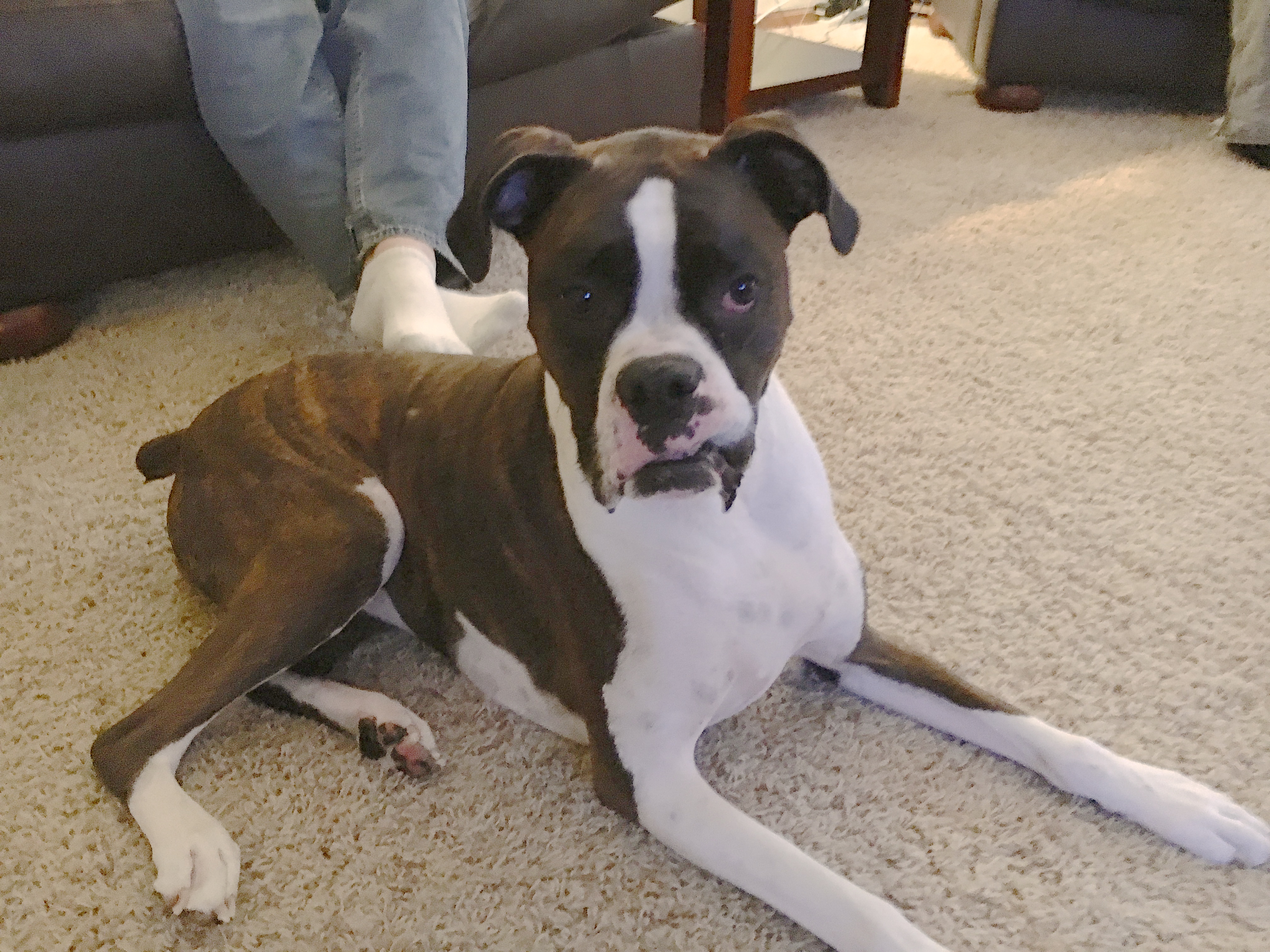Why Adding Rules and Structure is a Great Way to Help a Dog Learn to Respect Personal Space
By: David Codr
Published Date: March 15, 2017
Gia is a four-year-old Boxer who lives in Omaha with another Boxer named Oscar (Not pictured). The guardians booked a dog behavior training session with me at address Oscar’s aggression and Gia’s habit of getting all up in people’s personal space when she is excited.
Because of Oscar’s aggression to new people visiting the home, his guardians had him kenneled when I arrived for the session.
Gia met me at the door showing good curiosity and confidence. But after she got a chance to sniff me, she started to show some signs of insecurity; barking then backing up. I adjusted my posture to make myself more inviting, then when she approached, I offered her a different kind or reward to make sure we got started off on the right foot.
After sitting down to discuss the dog behavior problems and their daily routine, it quickly became apparent that the human’s failure to provide the dogs with structure had resulted in a pair of dogs who saw the humans as peers, not authority figures.
When a dog considers itself as a peer to a human, it thinks of itself as being in a leadership position. When a dog thinks its in a leadership role, they try to assume tasks relative to that position. One of these is security for the pack. Its a good bet that Oscar’s aggression is an offshoot of his belief that he is the house security guard.
In order to eliminate’s Oscar’s aggression and Gia’s lack of respect for personal space I knew I needed to show the humans how to change the leader follower dynamic in the house. This is a different approach that dog trainers usually select.
I find one of the big differences between dog trainers and dog behaviorists is the former wants to treat the symptoms. But correcting or teaching a dog not to bark fails to address the root cause of the problem. As a dog behavior expert, I have learned that skipping the symptoms and instead focusing on the root cause or reason for the dog behavior problem is the best way to stop the issue for good.
I suggested a number of rules and boundaries then shared dog training tips to help change and modify the dog behavior for this pair of Boxers.
After sharing a number of dog training secrets with the humans, I asked one of the people Gia jumps up on and showed no respect for personal space to use these new methods to claim her space back from Gia.
While we usually think that kisses are a good thing, letting a dog jump up on you or invade your personal space that way usually indicates a dog that does not respect you as an authority figure. Respecting space is something dogs do with people and animals they respect as authority figures. Dogs are great at identifying what they can and cannot get away with from the people in their lives.
But now that the human was disagreeing with Gia in a way that she understood, all it took was the human to follow through so she got the message across that that behavior would no longer be acceptable.
ROADMAP to SUCCESS
- Start defining personal space and stop petting the dog immediately any time it jumps up or engages in any unwanted behaviors.
- Increase Gia’s daily exercise, especially early in the day.
- Practice the recall exercise (2 or more times a day) as demonstrated in the session.
- Use the Escalating Consequences to disagree any time the dogs break the rules or are about to.
- Introduce rules and boundaries and consistently enforce them with both dogs.
- Get into a habit of petting or disagreeing with the dog within 3 seconds to help the dog understand what is being rewarded or disagreed with.
- Use passive training to reward Gia and Oscar for desired actions or behaviors.
- Avoid turning away when the dog jumps up or walking around the dog. Turn with authority to face the jumper or walk through the dog so it starts to get into a habit of deferring.
- Have a family member or friend play the part of a guest so the family members can practice claiming the door. If necessary practice with one dog at a time.
- Practice claiming personal space for guests and family members if they aren’t comfortable doing so or neglect to do so for themselves.
- Only release Oscar from the kennel when he is completely relaxed as shown in this video.
- Look for ways to delay gratification such as having to sit before throwing the ball, getting permission to eat food, etc.
- Add structure to feeding time; only feeding the dog after a human eats first, then there calmest dog next.
Categorized in: Dog Behavior


